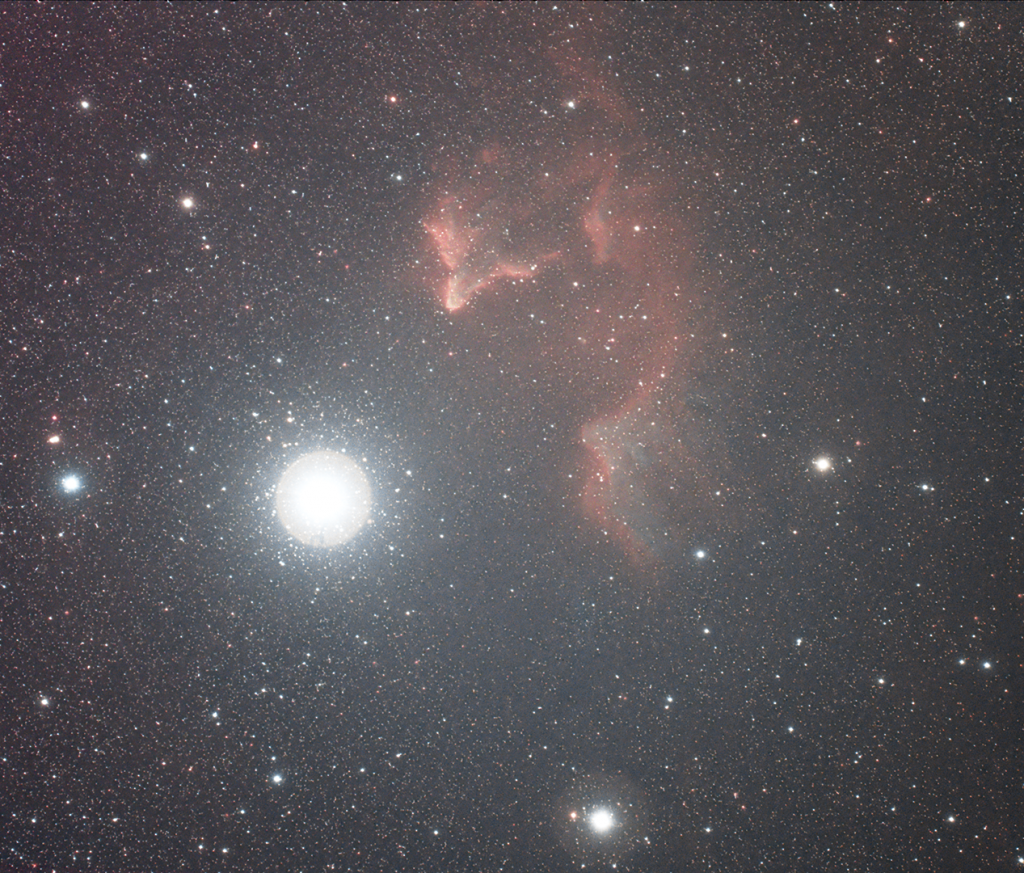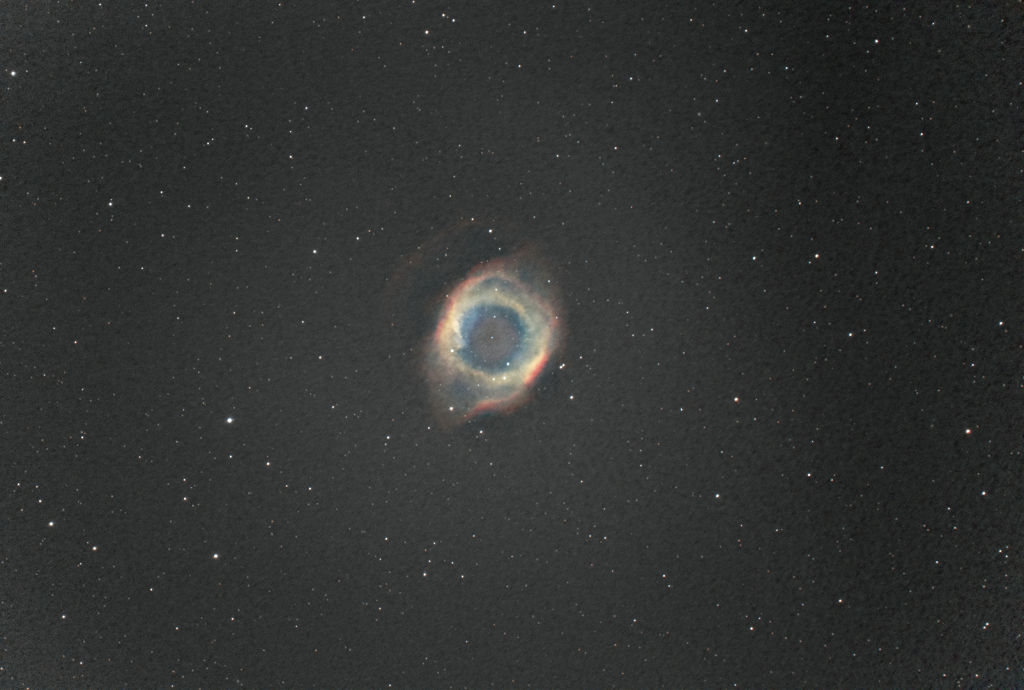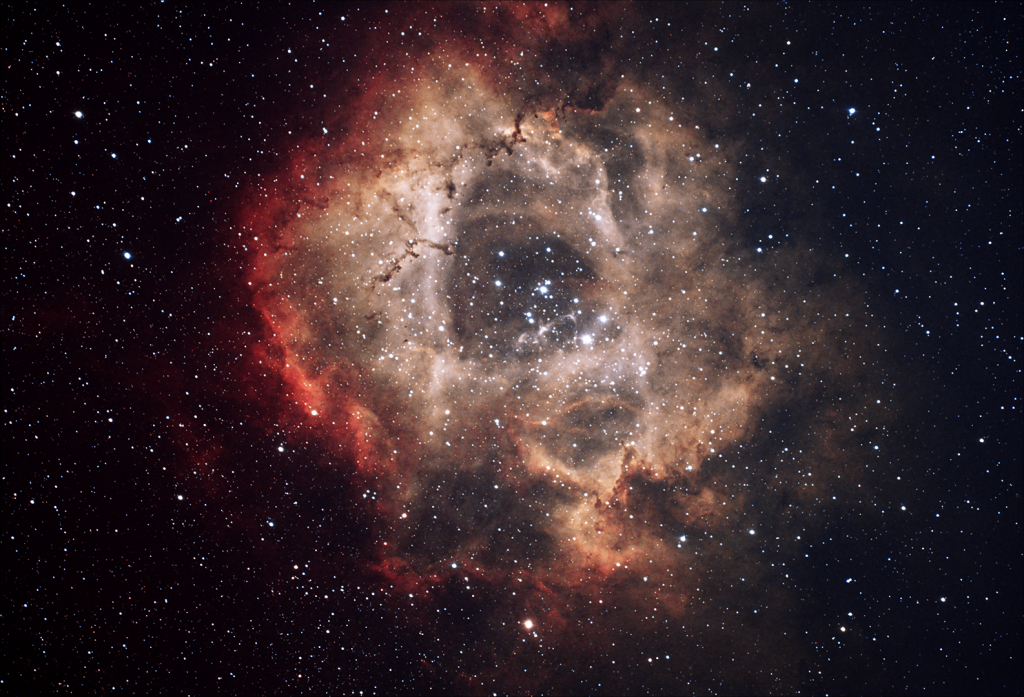
This is the Gamma Cassiopeia Nebula, aka IC 63 (top) and IC 59 (right of center). The dinner plate of a star is second magnitude Navi, the central peak in the W of the constellation of Cassiopeia. Notice this nebula looks like a caricature of a Guy Fawkes mask about to eat the star. Who says I don’t have an imagination?
Anyway, I haven’t had a picture to share in four weeks and decided to inflict this one on you even though it’s not too good. In early December I managed to get four five minute images before clouds happened. I decided to try it again Friday night but clouds interfered again after the fifth frame. So this is just 45 minutes of data.
This nebula is actually near Kavi and is slowly being dissipated by it. The top one (IC 63) is also called “the Ghost Nebula” maybe because in another orientation you could imagine someone with a sheet over their head. As far as I can tell, the silly nickname for IC 59 is IC 59.


